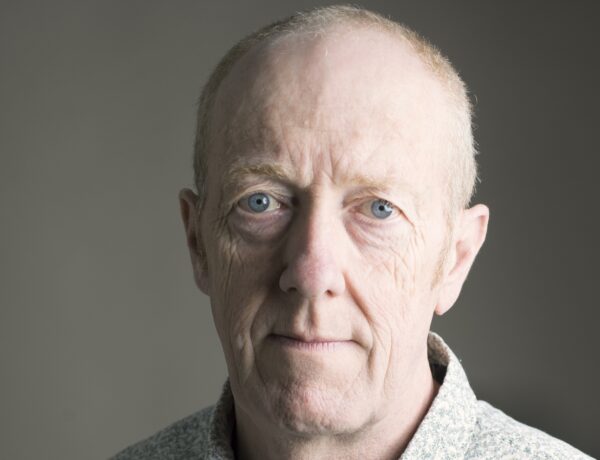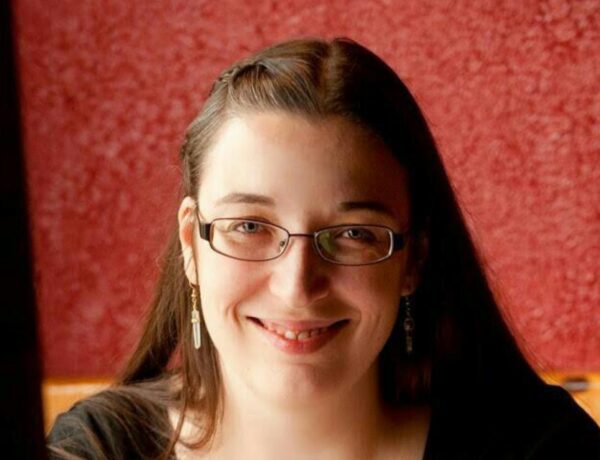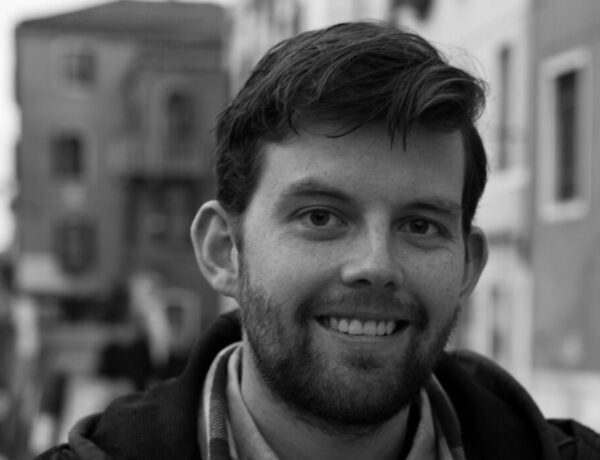Bradford Morrow is a renowned author, editor and professor of literature. Born in Baltimore and raised in Denver, he has traveled and lived in various places, including rural Honduras, Italy, and Paris.
After graduate work at Yale University, he moved to Santa Barbara, California and later to New York City in 1981, where he founded the literary journal Conjunctions and began writing novels. He has been a professor at Bard College since 1990, where he also continues to edit Conjunctions.
He has taught creative writing at other universities, and has served on the board of trustees of PEN American Center. He has received numerous awards for his writing and editing, including a Guggenheim Fellowship in fiction, an Academy Award in Literature from the American Academy of Arts and Letters, and The New York Times named his novel The Forger’s Daughter as one of the “Ten Best Crime Novels of 2020”.
He currently divides his time between New York City and upstate New York and working on his tenth novel, The Forger’s Requiem.
Each week, we publish a new daily writing routine from a famous author. Subscribe to our newsletter so you don’t miss out!
Hi Bradford, great to have you on Famous Writing Routines. We’re really excited to talk to you about your writing routine and process. For those who may not know, can you please tell us a little bit about yourself?
I grew up in a red brick house on the front range of the Colorado Rockies where there was much music but few books. In the basement was a copy of Emerson’s essays, which I read over and over, along with scattered others like H. G. Wells’s Tono Bungay and Poe’s tales.
I studied music, played professionally. But books and literature were what moved me most. In the end, I remedied a childhood of empty shelves by haunting used bookshops after leaving home, and proceeded to read my way through a library’s worth of fiction, poetry, plays, biographies, Buddhist texts, you name it.
I’ve now published nine novels and a collection of gothic stories, and am also the founding editor of the literary journal, Conjunctions, which runs to some 80 issues. Self-taught, stubbornly so, I never attended any writers’ workshops and for many years now have taught contemporary literature courses—creative reading classes rather than creative writing—at Bard College.
As a kid, I was encouraged to be a musician or maybe a doctor, though I did try my hand at creating stories—even won a contest in middle school for a tale about a kidnapping, called “Tor”—and later, in Paris and elsewhere, wrote fiction and poetry.
But it wasn’t until my early thirties that I began my first novel, Come Sunday, which William Burroughs gratifyingly claimed “resists classification” while drawing “on an astonishingly wide knowledge and experience of people, places, and history,” followed by my second, The Almanac Branch, which was a finalist for the PEN/Faulkner Award. Since then I’ve researched and written Trinity Fields, Ariel’s Crossing, The Diviner’s Tale, The Prague Sonata, as well as the first two novels in a trilogy centered on literary forgery, The Forgers and The Forger’s Daughter, along with a collection of gothic stories, The Uninnocent.
My children’s book, Didn’t Didn’t Do It, was illustrated by the wonderful Gahan Wilson, and another, A Bestiary, included artworks by Vija Celmins, Richard Tuttle, Kiki Smith, Eric Fischl, and others. I’ve just signed the contract for the final volume of my bibliomystery series, The Forger’s Requiem, which I’m working on now.
Can you take us behind the creative process for your 2020 book, The Forger’s Daughter?
Because it was a continuation of The Forgers, The Forger’s Daughter presented a whole spectrum of challenges. I wanted it to operate as both a standalone novel and a satisfying sequel. So I mapped detailed chronologies, character singularities, and all manner of storylines that would accurately evolve from the earlier narrative without repeating anything more than necessary.
Since the narrator, Will, in the first book had proven himself to be, let’s just say, rather unreliable, I decided to bring in a counterpointing voice in Daughter, that of his wife Meghan. She would know things he didn’t, and vice versa, and this would texture their accounts of “reality,” since each was, as we all do, forging and skewing truths.
Further, I wanted the focus on Arthur Conan Doyle, the author whose writing was forged in The Forgers, to shift to someone new but in the same literary vein as Sherlock Holmes. Edgar Allen Poe was a natural fit, as well as a lifelong enthusiasm. And his first book, Tamerlane, published by an obscure Boston printer in 1827 and now the rarest book in American literature, was the perfect focal point.
Research for The Forger’s Daughter was exhaustive, exhausting, and a joy to do. I found myself corresponding with several of the foremost Poe scholars in the world. I became close friends with the greatest collector of Poe books and memorabilia, Susan Tane, who let me examine her copy of Tamerlane and other Poe rarities.
My knowledge about Poe grew far beyond what was needed to write my book. But scouring through his life looking for little-known biographical details became part of the very process of writing. Fact and fiction in that novel, and in many of my books, are woven as tightly together as possible. I like to think of them as being non porous enough to carry water, like baskets made of entwined reeds.
I also challenged myself to add at least two pages a day until the draft was finished. It was a technique—call it that—I’d used before when writing Giovanni’s Gift and The Forgers. Strange as it may sound, I found it particularly effective to place a curse on myself that would bring me serious suffering if I didn’t keep to the schedule.
I won’t share what the curse was but I’m glad I kept my writing rhythm going without pause. Health, inspiration, drive, devotion to the book, adamancy, luck, and a curse—whatever is necessary to bring forth the finished novel—I trafficked in them all.
Discover the daily writing habits of authors like Stephen King, Neil Gaiman, and Gillian Flynn with Famous Writing Routines Vol. 1 and learn how to take your writing to the next level. Grab your copy today!
What does a typical writing day look like for you?
Research for my books has taken me to some very different places—rural Honduras, southwest Ireland, the greater and lesser Cranberries off Mount Desert Island—where I sometimes wasn’t consciously aware I was even doing research.
Along the way, I have become a certified dowser, flown low around the rim of Mount St. Helens with one of the Ravens who was a pilot in America’s covert insurgency in Laos during the Vietnam war, walked across the desert on Good Friday with thousands of true believers to the small adobe mission in Chimayo, New Mexico, where I collected a handful of the sacred, healing dirt. In many ways, I’ve come to believe that every last experience, whether good or bad, can be seen as research.
Most of my actual fiction writing takes place in an old farmhouse in upstate New York, and when I’m deep into writing a book I tend to rise early, drink my two espressos, maybe have a little homemade granola with blueberries, and sit down to it. Often working for hours on end, I have to force myself now and then to get up, walk around, stretch my eyes, unbuckle my back, shake my wrists.
There’s a nice small library in my house with bay windows that look out onto an apple tree and grass, an ostensibly perfect place for a writer to write. Instead, I choose to sit at the kitchen table, my back to the stove, where I feel most comfortable.
I’ve never liked writing in a room surrounded by books, perhaps because of a need to feel my manuscript-in-progress has utter autonomy. A room of its own. Which, of course, makes no sense. All books are related in myriad ways to all other books, even if they’re diametrically opposed in form and vision. Still, for myself, I prefer a simple neutral writing space like my kitchen table, which perfectly fits my needs.
Can you talk about some of your must-have writing tools?
Oh, this is an interesting question. I wrote an essay that’s available on LitHub about my use of Boorum & Pease ledgers, The Gentle Art of Notebooking: Why Digital Note-Taking Will Never Replace the Physical Journal, which has illustrations of a sampling of my pages. There’s much superstition involved in writing a book, at least for me there seems to be. So whenever I begin a new novel project, I pick up one of these at the stationers or rummage a mostly unused one from my collection. I write the novel’s title on the front endpaper and then go on to fill the pages.
Besides working in these somewhat unwieldy hardcover ledgers—in which I write ideas, fragments, drafts of passages, alternate names, chronologies, snippets of dialogue, an interesting word I’ve just read or heard, and tape newspaper clippings, flyers, maps, even flowers and other flora from research trips—I write on an old Lenovo T60 laptop.
In tech terms, it’s preposterous that I keep using this outmoded Methuselah. But it has become such a natural extension of my hands and fingers that I easily forget it is even there when I’m working. I suppose it’s not unlike other writers who compose with a favorite pen or on a vintage typewriter which are vastly slower than, say, a 2022 MacBook Air, but which they’ve grown used to and prefer to other scribing tools.
Confession. I bought a new, fully loaded, up-to-the-minute laptop last year, tried it for a while but became discouraged by all of its fantastic technologies. It now sits in a drawer, waiting for me to revisit it when the ThinkPad dies. For now, I’m working on my new novel, The Forger’s Requiem, which will complete the trilogy, using, of course, my long since-outdated T60.
Other implements. I use Palomino BlackWing pencils which I acquire by the box, and scraps of paper, backs of envelopes, paper napkins, whatever’s at hand when an idea comes. As well, I’m fond of using calendars for chronological verisimilitude, tracking the weather in locations where scenes are set, characters’ birthdays and watershed moments, political and cultural events, and so forth. They become quite a palimpsest, done in a shorthand only I can parse.
Whenever you hit a roadblock during a writing session, what are some of the methods you use to get back into the flow of things?
There are so many ways to push past roadblocks. Sometimes I’ll read a book that has nothing to do with what I’m working on, but is so well-written I find it inspiring, then return to revisit my textual quandary with fresh eyes. Or, I’ll turn to other work such as correspondence or editing Conjunctions.
Often I’ll simply stay with the problem, revise and re-revise whatever has me stuck, but just as often I’ll move on to address another roadblock in the manuscript, because there are usually more than one. And in resolving that issue, I occasionally find the right path to clearing up the original problem.
Cliched as it may sound, roadblocks are often as not opportunities to pause. To turn away from the impasse and ponder it from different perspectives. At times, the best method is to realize the roadblock is a mirage and delete it altogether, freeing myself to begin anew in the passage.
If it turns out to have been an essential part of the structure, one of the beauties of the written arts is that you can reinsert it where it was, or see how it works elsewhere. That being said, I keep an Outtakes folder on my screen, and when I move problematic passages into it, I experience less of a sense of loss. I can always retrieve them, though I rarely do.
What have been some of your favorite recent books you’ve read?
Most of my reading right now is research material for The Forger’s Requiem, so works by and about Mary Shelley and Agatha Christie, journals, biographies, as well as histories of places, studies on forging techniques—more a focused salmagundi than a recommended reading list.
Ishiguro’s Klara and the Sun and Rikki Ducornet’s Trafik are two novels I recently read and admired, each of them featuring a distinctive, worldly-wise, memorable robot. I also just finished Laird Hunt’s This Wide Terraqueous World in manuscript, which is a truly brilliant mix of memoir, travelogue, philosophy, and lit criticism that raises free associative thought to a next level art form.
If you were talking to an up-and-coming author looking to get published, what would your advice be to them?
This is a question I tend to shy away from, in part because there is no single pathway to publication. Having watched many writers get their start in literary journals, and as the editor of Conjunctions, having helped more than a few of them find readers, including agents and eventually publishers, I’m biased toward this being one good way to begin.
Read literary mags, see which are publishing works you feel most aesthetic kinship with, subscribe, submit, and don’t be too discouraged by “rejection.” If you notice that this or that publisher has a habit of bringing out books that you really like, remember that a publishing house is composed of editors, people whose taste in literature you share.
Same with agents. Look up who represents writers who are important to you. Find your aesthetic family in the large literary community and you’ll at least know where to begin showing your manuscript. Nurture your carapace, as you’ll need it later when your books begin to reach audiences and, of course, critics. Finding an agent is important, but not as crucial as finding your voice.
Don’t be in a rush to publish, enjoy your precious apprentice days. Embrace the freedom of anonymity and the joy of writing in the perfect privacy in which nobody outside your closest friends and family could care less that you’re laboring away on a first novel.
A writer’s going to write no matter what happens, and it’s crucial never to lose your essential impulse to create your art and refine your voice even as your vision expands, sharpens, deepens. If you can read the world with a fresh eye, it will want to read what you’ve seen. There, I haven’t shied away after all. Take what you can use, and toss the rest.
What does your workspace look like?
My favorite writing space is, as mentioned, my kitchen table. A quiet, familiar place without interruptions. I used to write with music playing, but now I prefer silence. I’m told I talk to myself. I get up and blindly pace around the table in search of a phrase sometimes. Most fundamentally, my writing space is a safe room where I can comfortably disappear into my alternate world. That being said, when I’m deep into a novel, I can pretty much write anywhere. Trains, planes, park benches, wherever I can sit with my pencil, paper, and imagination.

Affiliate disclaimer: Some links on this website are affiliate links. We may earn a small commission if you make a purchase through these links, but only promote products we truly believe in. We disclose affiliate links and give honest reviews.



No Comments